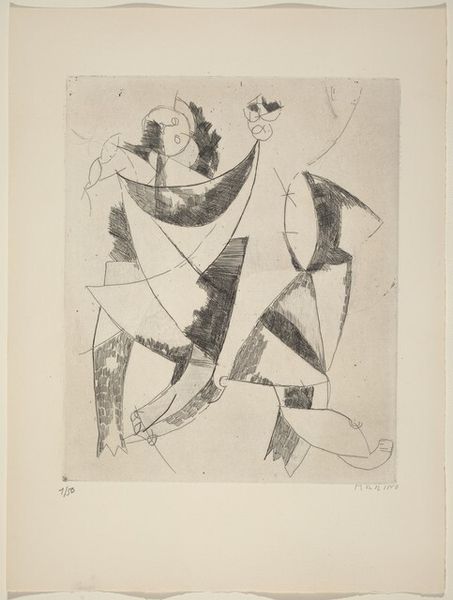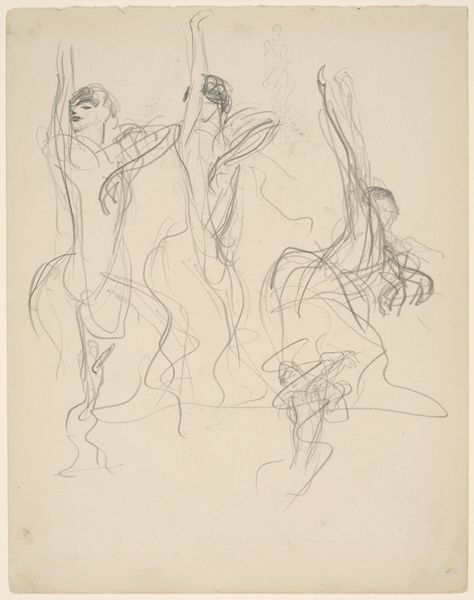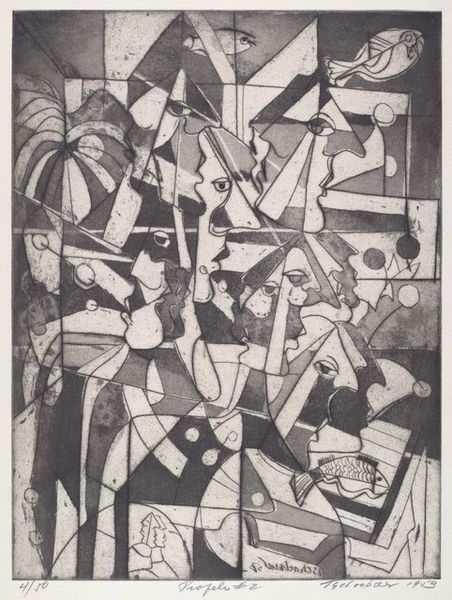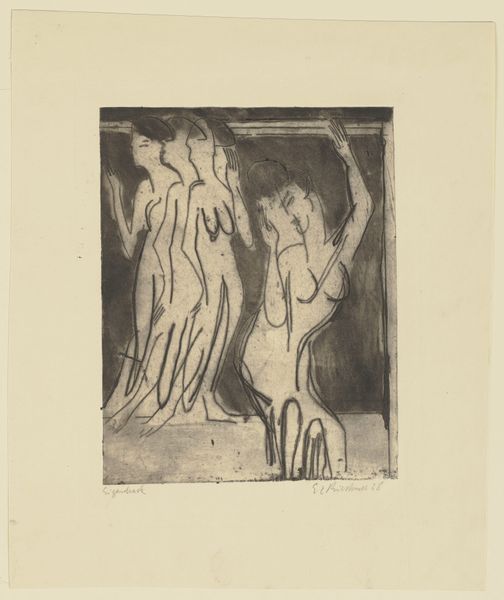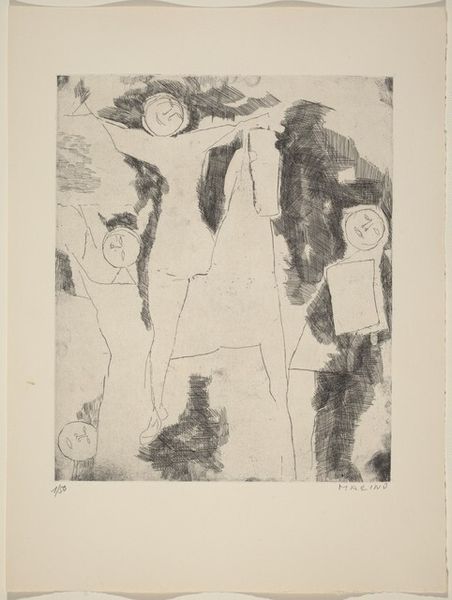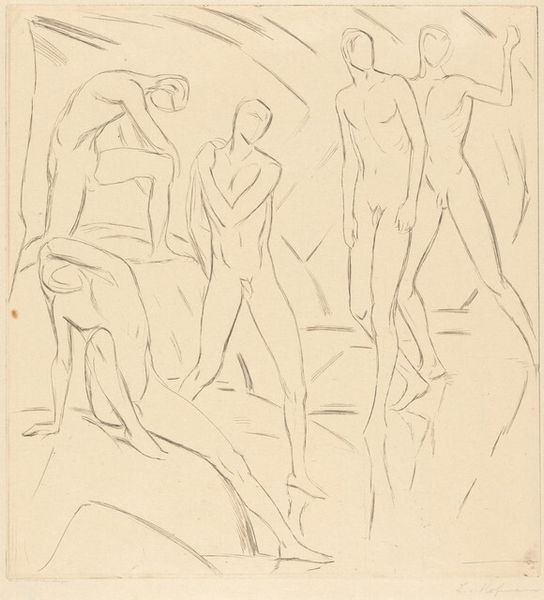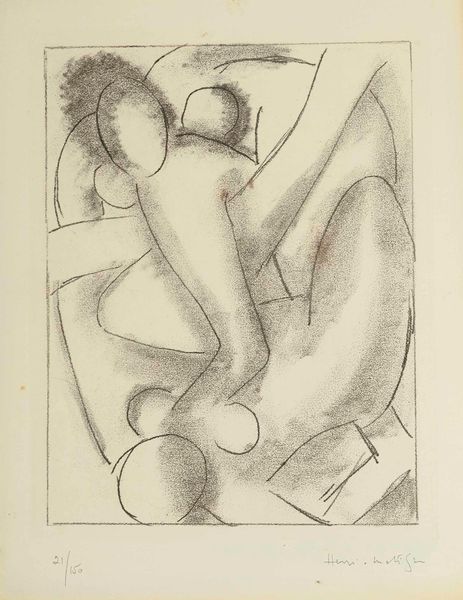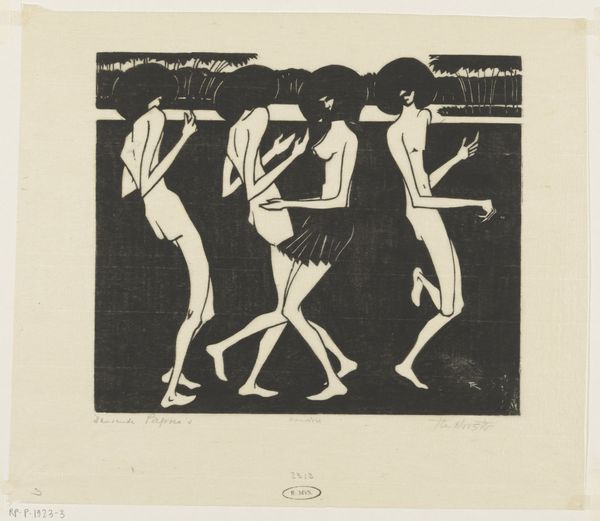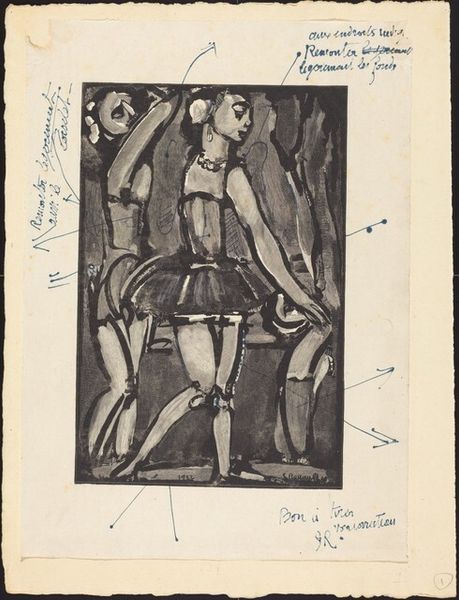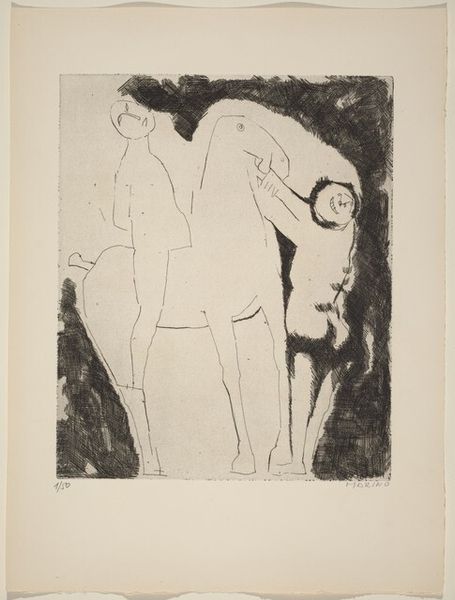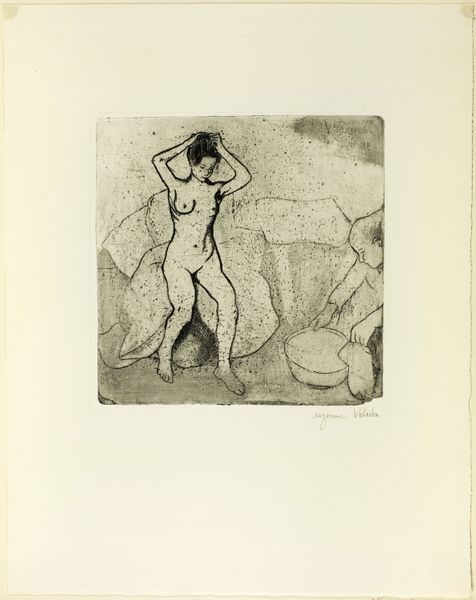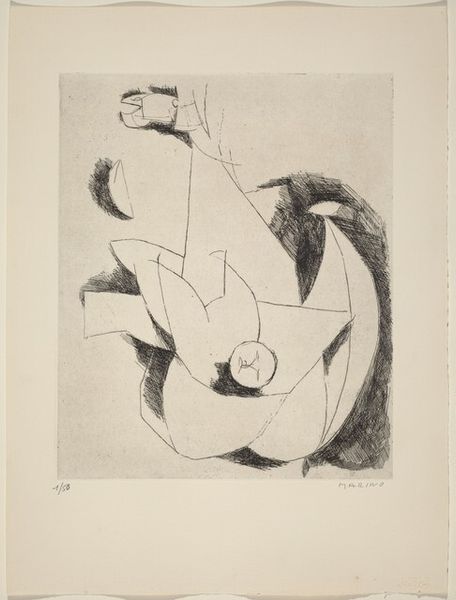
print, etching
#
abstract-expressionism
# print
#
etching
#
figuration
#
geometric
#
modernism
Dimensions: plate: 35.6 x 29.2 cm (14 x 11 1/2 in.) sheet: 51.8 x 38.7 cm (20 3/8 x 15 1/4 in.)
Copyright: National Gallery of Art: CC0 1.0
Curator: What a fascinating print. Editor: Right? This is Marino Marini's "Trio" from 1954, an etching. There's something unsettling, yet playful about it. It almost looks like dancers made of broken mirrors. How do you approach something like this? Curator: First, I consider the etching process itself. Each line, each area of tone, meticulously carved into a metal plate. This labor-intensive process, compared to, say, a quick sketch, speaks to the intention. It elevates figuration out of the quotidian into an important statement. What was Marini conveying by using the tools and methods that he did? Editor: You’re thinking about the "why" behind the medium itself? Like, why an etching instead of a painting. Curator: Exactly. How does that intentionality influence how the work exists within society, as well as the history and context around printmaking in 1950's Europe? Post-war, access to art-making equipment was possibly more difficult for some than others. Where would Marini find his supplies and workspace? Where did he disseminate his artwork? Was it widely available, or intentionally kept restricted to a select viewership? Editor: That's an angle I hadn’t even considered – who had access to create and consume this type of art? Curator: Also, look at the varying line weights. Thick, deliberate strokes juxtaposed with delicate, almost hesitant lines. Consider the socio-economic context that often separates craft, something readily made by everyday citizens, from the supposed elevated status of “high art”. How does his process question the social construction of labor? Does that make the “meaning” less fixed? Editor: It really reframes the whole image! I'm starting to see "Trio" not just as figures, but as a statement about art making itself. Thanks! Curator: Indeed! And understanding the means of production can enrich anyone’s understanding and interpretation.
Comments
No comments
Be the first to comment and join the conversation on the ultimate creative platform.
